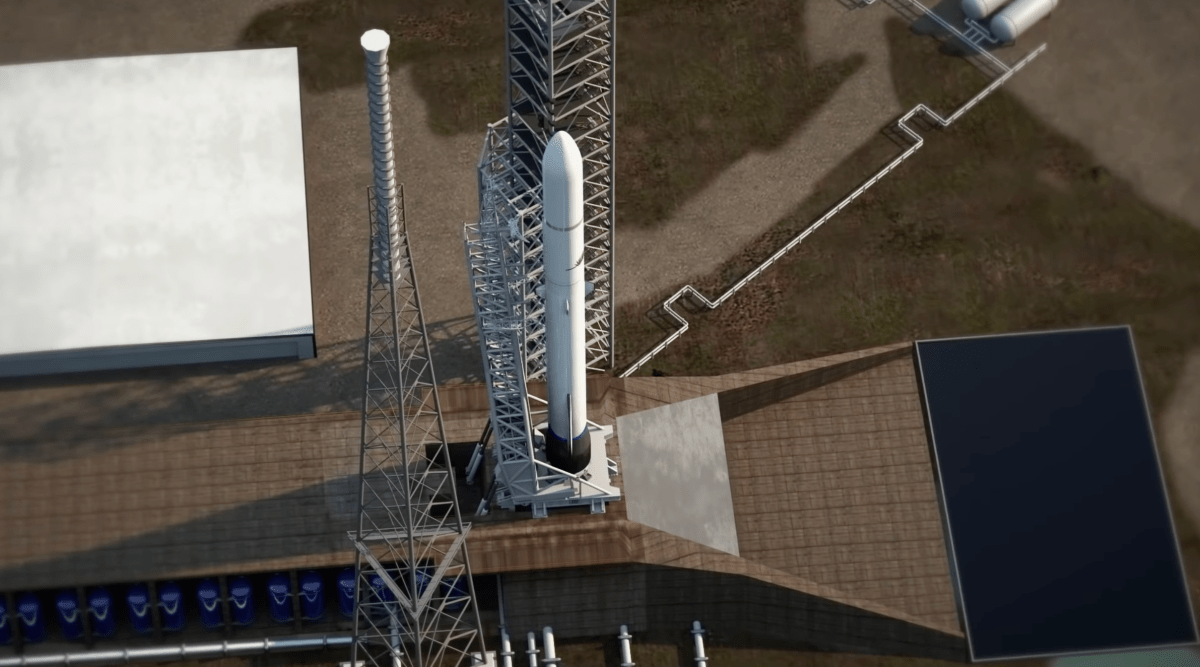WASHINGTON — NASA has decided not to launch a pair of Mars-bound smallsats on the first flight of Blue Origin’s New Glenn in October out of concerns that the rocket may not be ready in time.
NASA announced Sept. 6 that the agency will halt pre-launch preparations for the twin Escape and Plasma Acceleration and Dynamics Explorers (ESCAPADE) smallsats. The spacecraft were scheduled to launch on the first flight of New Glenn between Oct. 13 and 21 from Cape Canaveral, Florida.
The agency made the decision now, more than a month before launch window opens, before loading the spacecraft with hydrazine and nitrogen tetroxide propellants. NASA had concluded that it could not push back the spacecraft fueling and thus needed to decide now if New Glenn could be ready in time for the October launch window.
“The decision was made to avoid significant cost, schedule, and technical challenges associated with potentially removing fuel from the spacecraft in the event of a launch delay, which could be caused by a number of factors,” NASA stated.
An industry source familiar with the decision said that Blue Origin believed that New Glenn would be ready for a launch during the nine-day mid-October window, although the company still has significant work to complete testing and integrate the rocket. That schedule required that those final activities go largely as expected, while first launches of new rockets often encounter issues.
NASA was seeking more margin in that schedule before committing to fueling the spacecraft, given the difficulties in removing the propellants if New Glenn missed the October window. “This is an important mission for NASA, and it’s critical we have sufficient margin in our prelaunch work to ensure we are ready to fly a tight planetary window,” said Bradley Smith, Launch Services Office director at NASA Headquarters, in a statement.
NASA said the next possible launch date for ESCAPADE, again on New Glenn, would be in the spring of 2025. The agency did not disclose details of that alternative trajectory, including when the spacecraft would reach Mars. A launch then would be outside the traditional Mars launch window that is open this fall but is not available again for roughly two years.
Agency officials emphasized they still planned to launch ESCAPADE, a low-cost mission to study the interaction of the Martian magnetosphere with the solar wind, despite the delay. “We’re committed to seeing ESCAPADE safely into space, and I look forward to seeing it off the ground and on its trip to Mars,” said Nicky Fox, NASA associate administrator for science, in a statement.
“We’re supportive of NASA’s decision to target the ESCAPADE mission for no earlier than spring 2025 and look forward to the flight,” Blue Origin said in a statement.
The company said that the first flight of New Glenn will instead carry unspecified technology for its Blue Ring orbital transfer vehicle, and also serve as its first certification launch for the Space Force’s National Security Space Launch program. That was intended to be on the second New Glenn flight in December, but the company will instead move up that launch to November. Blue Origin had not previously disclosed the payload or schedule for that second launch.
An industry source said Blue Origin isn’t expected to slow down or significantly change launch preparations beyond any tweaks needed to accommodate the change in payload. That includes a static-fire test of the upper stage, rolled out to the pad Sept. 3, early next week. The launch itself could slip by as little as a few weeks, to early November.
